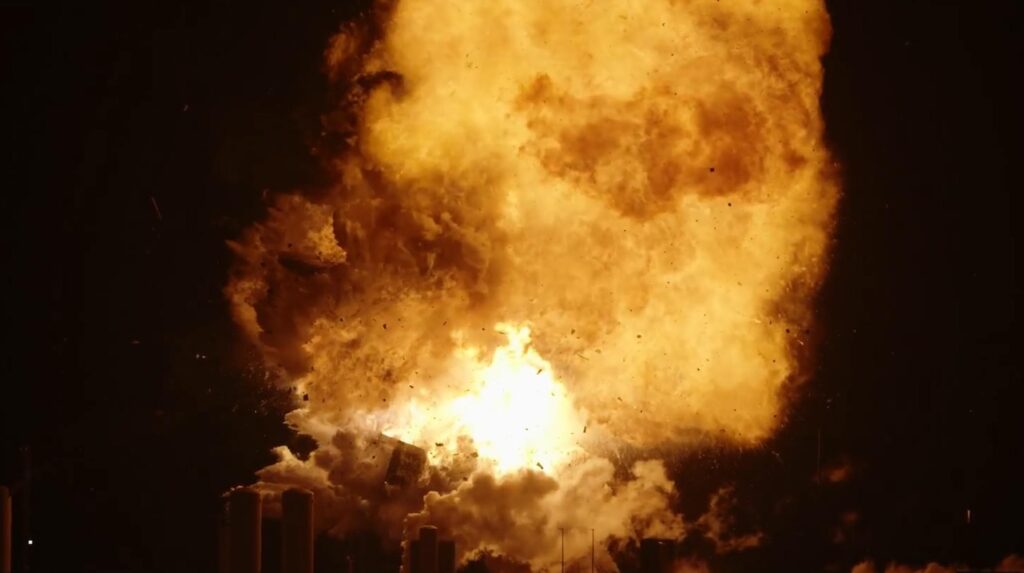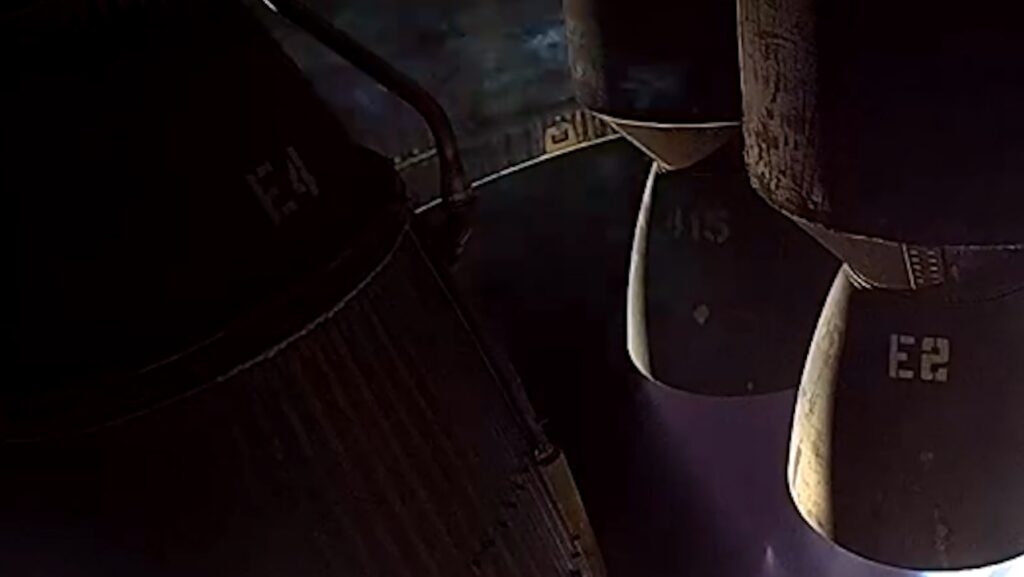ESA Ministerial Conference – Ariane 6 Tops Agenda
 ESA Ministerial Conference to Focus on Ariane 6, ISS, Exploration and the Evolution of ESA , SpaceRef Business
ESA Ministerial Conference to Focus on Ariane 6, ISS, Exploration and the Evolution of ESA , SpaceRef Business
“The next ESA Ministerial Conference will take place this Tuesday in Luxembourg. At the top of the agenda is Europe’s future access to space with a modular Ariane 6 intended to be meet the changing demands of the satellite industry as well as being more price competitive.”









Modular design? How will Araine 6 recover and reuse their boosters? Will they land on barges too or fly back to land? How long should their reusable R&D program take? How much should it cost since Spacex has showed them how? Great to see someone besides Spacex flying reusable rockets!
“modular” =/= “reusable”
the boosters are solid rockets, and are expendable.
“modular” just means that the first stage, second stage, and boosters are all the same solid rocket motor.
So if you recover solids and rebuild them do you save any money?? It was expensive with shuttle but is that really the case?? How much cheaper can a reused solid booster be?
If they do it for the nuke work force can they operate at a loss??
Or has Spacex already won this game?
Dont they need a reusable liquid to compete with Spacex?
If the larger satellite market is so small just one or two reusable falcons, flown 10 times, at a fraction of their price could kick their A$@.
if the Shuttle had used expendable solid rocket boosters, it probably would have wound up being a bit cheaper. NASA spent a lot on recovering, cleaning, inspecting, refurbishing, etc. to reuse the SRB segments. the analyses i’ve read about the reuse of the SRBs conclude that it’s pretty close to being a wash, financially – if you design something that’s just sturdy enough for launch but doesn’t have to be robust that it survives the return trip to Earth, you can make it lighter, with cheaper materials, etc. but then you are still stuck with the recurring cost of re-manufacturing the expended parts. the realization that the cost of refurbishment is about the same as the cost savings of reuse colored the SSTO / reusable rocket conversation for many years, until SpaceX shook up the game.
SpaceX has already won. the Falcon 9 is currently cheaper than the Ariane 6 will be, and that’s without factoring the possible future price reductions that come with reuse.
if their goal is to compete with SpaceX, yes, they will need to develop an inexpensive yet recoverable and reusable liquid fueled rocket. the fact that they aren’t doing this means that their launch market will be limited to ESA launches and the European GPS system and communication satellites that will be required by European government contracts to use ESA rockets.
Will humans settle outer Space?
So Europe’s/tribalism need to pay for war machines/solid booster industry is keeping us earth bound. Check
I’m playing the humans settle outer space game.
Can there be a Spacex in Europe or would they be prevented from having any business by the government??
@DSTARS… The UK is not part of the Launchers programs. In keeping with their status of being the only nation to develop then abandon launcher capability… They do have the Skylon bubbling away though. So look there, or our Orbital Redux by the Helvetii. The only ESA player with an independent nuclear capability to support is France (M51) while Germany is the curator of a rusting big liquids capability. The disquieting facts with the latest proposal are that although we retreat from an all solids option, we are now left with an industrial prime (The same as the M51 program, google their performance on that!) and a lot of superfluous CNES mouths to feed. Not sure there is a place for them at ESA unless France ups it’s contributions. So interesting times.
you’ll be playing the long game, then. i very much doubt we’ll see a permanent human settlement anywhere in outer space within our lifetimes. building even a partially self-sufficient human outpost that requires occasional resupply (such as the ISS, except on the Moon or Mars) would require a long-duration commitment and effort, not to mention being of large expense, which i don’t think any nation currently has the will to see through to completion.
Errr… No. According to the latest news, the latest Arianne 6 configuration under study is a cryogenic core stage and second stage (for both versions), and a variable number of solid boosters (2 and four) to make the two variants. So a European H-2 with ~5/20mT versions.
The all-solid Arianne 6 for small payloads depended on Arianne 5 ME getting funded, Europe doesn’t want to loose a 20mT class booster capability. Besides, it was pretty stupid in the first place.
you’re probably right. the baseline design of the Ariane 6 has changed so many times, it seems i was laboring under an outdated understanding of what the current design is. my bad.
Development cost can be kept down with solids but operational processing cost i higher. Apparently the solids are monolithic rather than segmented, so the cost of assembly would not be quite as high as with Ariane 5, but it still seems like a step backward. This is a bet that the market will remain small. If the launch price is not competitive with SpaceX, that may well come to pass.
My perception has always been that they are doing with their solids the same thing we do with ours: use their space launch program to subsidize their ICBM programs. Those solids (the same as Vega uses) make aweful good ICBM stages. I realize most of us are space purists, but governments have shown they they LOVE to have 2 programs subsidize a single technology base, PARTICULARLY when one of those is a nuclear deterrent.
And that is the reason there are solid-fueled boosters, yes. SOMEONE has to have the production capabilities to build the next batch of ICBMs.
Right. Scientists wanted NIF to do fusion research and further fusion reactor development. Congress funded NIF because they wanted to make sure the nuclear stockpile would age properly and there would be no surprises. It’s always the story of economics: the study of unlimited wants in the presence of limited resources.
There was a chance to go to a cheap modular Arian 6 only built in France and Italy. This has not happened because there is political influence in the system. The difference between Arian 5 and Arian 6 are marginal and they have not the potential to reduce the prize by 50%. What they invest in the new design would subsidized Arian 5 for two decades. It is hard to understand, but the lobby must be strong. In the end 1 or 2 billion for Arianspace per year to make the launch cheap enough to get launches will be of no big problem for the countries involved. So they do not have to fear SpaceX. Europe will never allow to to be dependent on others to launch their satellites, if this comes with a prize tag, who cares.
http://www.spacenews.com/ar…
Seems they better get use to paying the price tag
Remember, Ariane is both a jobs program and a launch vehicle. If you aren’t constantly designing something new, there are no development jobs. If you make the system too simple, there are no operations jobs. After ESA built a few ATVs, they are canceling the program, why? If you keep building proven designs like the Russians with Soyuz, you only need a fraction of the engineers to maintain it – no development jobs. Cutting out the German workforce is just as bad, how will you have access to their money if they don’t have technologies and workers on the new project?
You are right that they Europeans want an indigenous capability. The French and now the EU in general are too proud to rely on someone else and stand on the sidelines. Personally, I like that Europe thinks that space is important enough to invest significant resources into it. If I were an EU citizen, I’d be pretty proud of our contributions to space development. I want more people trying more ideas about how to utilize and access space. This is a problem that will only get solved by trying LOTS of different ideas and approaches.
I have no problem to pay 5 Euro or 10 Euro per year to be independent of US, Russia and China. The point is: Speak the truth! If you design a new rocket to generate workload for EU-aerospace industry and that you really do not care for the prize of the launcher and further you will compete with Falcon9, Long March and Angara by subsidizing the lauches prize tag, I would feel that this is a way to go and I would say YES!
Dead-end project.
After spending $5.2 billion on creating the rocket and the new launch pad, what will they have at the end of the decade?
They project that if they build 9 ariane 62s per year and 9 ariane 64s per year, then, with subsidies, they will have launch costs 50% greater than SpaceX offers NOW. This is before SpaceX factors in reusability (they anticipate a 10 to 100 times drop in costs).
Right now European non-government flights fly any international rocket they want.